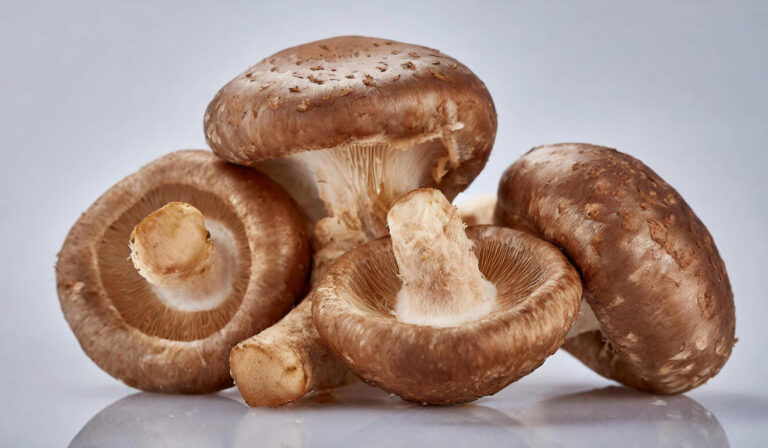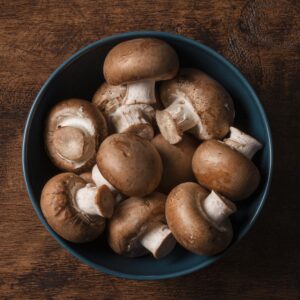In Mississauga, Ontario, conversations about cannabis are everywhere—but how much of it is grounded in truth versus long-standing cannabis myths? You hear things from friends, see claims online, and may even recall warnings from high school health classes. Yet, cannabis discussions are often clouded by rumors and misinformation, making it hard to separate fact from fiction when it comes to common cannabis and marijuana myths.
Misinformation spreads quickly, especially about subjects that are often misunderstood or debated. Tall tales can easily become accepted wisdom if not examined closely. This is why we need to scrutinize persistent cannabis myths against scientific evidence and real-world data.
Thinking critically helps everyone make better-informed choices regarding their health and well-being. Whether you use cannabis, are considering medical cannabis, or are simply curious, knowing the facts is vital. Let’s break down some widespread misconceptions.
Myth 1: Cannabis is a “Gateway Drug”
Ah, the familiar “gateway drug” theory. You have likely encountered this idea multiple times. It suggests that using cannabis inevitably steers people towards harder, more dangerous illicit drugs like cocaine or heroin.
This notion became prominent decades ago, fueled by anti-drug campaigns aiming to curb substance use. However, rigorous research paints a much more complex picture than simple cause-and-effect. Correlation does not imply causation, a fundamental principle in scientific analysis.
While it’s true that some individuals who use hard drugs may have tried cannabis first, this doesn’t prove cannabis caused the progression. Many other variables, including social environment, genetic predisposition, mental health status, socioeconomic factors, and exposure during earlier adolescence, significantly influence the likelihood of developing serious drug abuse problems.
Consider alcohol: most individuals who consume hard liquor likely begin with beer or wine. Does this make beer a gateway to vodka? Such reasoning is flawed because it overlooks the complex web of factors contributing to substance use patterns. The underlying reasons for problematic substance use are multifaceted and rarely boil down to trying cannabis initially.
Myth 2: You Can’t Get Addicted to Cannabis
Contrasting the gateway theory is the belief that cannabis is entirely non-addictive. Proponents might argue that since it’s a plant and natural, addiction is impossible. This perspective, however, oversimplifies the nature of addiction and cannabis’s effects.
While cannabis is generally considered to have a lower addiction potential than substances like opioids, alcohol, or nicotine, Cannabis Use Disorder (CUD) is a recognized medical condition. The Centers for Disease Control and Prevention (CDC) highlights that a significant portion, roughly 3 out of 10 marijuana users, exhibit signs of CUD. The American Psychiatric Association includes criteria for CUD in its Diagnostic and Statistical Manual of Mental Disorders.
Addiction, or substance dependence, involves more than just physical reliance; it includes compulsive use despite negative health consequences. Someone with CUD might struggle to reduce consumption, experience withdrawal symptoms (like irritability, sleep disturbances, decreased appetite, or cravings) upon stopping, or persist in using even when it causes significant problems in their life, relationships, or employment. Acknowledging that marijuana’s addictive potential exists is crucial for responsible use discussions.
The risk of developing CUD increases for individuals who begin using cannabis at a young age, particularly during adolescence, and for those who use cannabis regularly and heavily. High THC content products may also elevate this risk. Therefore, while not everyone who tries cannabis develops an addiction, dismissing the possibility entirely is inaccurate and potentially harmful. Awareness of potential risks, including adverse health effects, is essential, just as with any substance.
Myth 3: All Cannabis Just Makes You Lazy and Unmotivated
The enduring “stoner” stereotype often portrays cannabis users as perpetually lazy and unproductive, stuck on the couch amidst snack wrappers. This image is heavily promoted in popular culture. But does cannabis truly extinguish all personal drive?
The reality is intricate and depends on various factors. Certain cannabis strains, especially those with high THC content, can temporarily induce feelings of relaxation, sedation, and, for some users, reduced motivation or what has sometimes been called “amotivational syndrome”. Individual reactions vary significantly based on the specific cannabis product, dosage, personal tolerance, mindset, setting, and even frequency of use—using cannabis regularly might yield different results than occasional use.
However, attributing a lack of motivation solely to cannabis overlooks numerous other potential contributors. Conditions like depression, underlying personality traits, lifestyle habits, or lack of engaging activities can all foster feelings of apathy or low energy. Some research exploring the link between heavy, long-term cannabis use and motivation suggests a possible connection in certain individuals, but findings are often inconsistent and may not apply to moderate users or those using medical marijuana for specific conditions.
Furthermore, countless individuals use cannabis while leading highly productive and successful lives. Some report that specific strains enhance focus, boost creativity, or help manage conditions like chronic pain or anxiety, potentially improving their overall functioning and problem-solving abilities. The stereotype of the lazy user is an oversimplification that ignores the diverse experiences of cannabis consumers and the complexity of human motivation.
Myth 4: Cannabis Kills Brain Cells
This alarming assertion likely originated from older, methodologically flawed studies conducted decades ago. While research indicates that heavy, long-term cannabis use, especially when initiated during adolescence, might correlate with subtle changes in brain structure and function, the notion that cannabis outright destroys brain cells in adults lacks substantial evidence.
Modern neuroimaging studies using more advanced techniques have not demonstrated widespread neuron death resulting from adult cannabis consumption. Ongoing research continues to explore the long-term effects, particularly focusing on potential impacts on cognitive impairment or short-term memory. The primary concern revolves around the developing brains of adolescent marijuana users, as substance use during critical neurodevelopmental periods might pose unique risks.
Prudence regarding substance use during youth is certainly warranted. However, the sensationalized image of cannabis “frying” adult brains is not supported by the current body of scientific literature. Responsible adult use does not appear to cause the drastic effects suggested by this myth.
Myth 5: Smoking Cannabis Is Just as Bad for Your Lungs as Smoking Cigarettes
Inhaling smoke from any burning plant material introduces irritants and potentially harmful compounds into the lungs. Marijuana smoke contains some of the same toxins and carcinogens found in tobacco smoke, including tar and carbon monoxide. Therefore, concerns about respiratory health consequences are understandable, particularly regarding breathing problems.
However, the association between smoking cannabis and severe lung diseases like lung cancer or emphysema is considerably less definitive than the established link for tobacco smokers. Several factors contribute to this difference. People who smoke pot tend to consume fewer units per day compared to typical cigarette smokers and often inhale differently (e.g., deeper puffs, longer holds, though holding longer is ineffective, as discussed later).
According to NIDA, while chronic cannabis smoking can lead to airway inflammation, chronic bronchitis, and symptoms like a daily cough or wheezing, robust evidence definitively linking it to lung cancer or emphysema remains inconclusive or mixed. Some studies suggest a possible link, particularly with heavy use, while others do not find a statistically significant increased risk compared to non-smokers, especially after adjusting for tobacco use. Comparing the amount of tar inhaled or carbon monoxide exposure directly between typical cannabis and tobacco smokers can be complex due to varied smoking habits.
This doesn’t imply cannabis smoke is harmless, but a direct equivalence to cigarette smoke might be inaccurate given the differences in usage patterns and possibly distinct biological effects. For individuals worried about the respiratory effects of smoking marijuana, alternative consumption methods like vaporizers or edibles eliminate smoke inhalation and associated risks of lung irritation or long-term health problems. Cancer patients considering medical cannabis should discuss consumption methods with their healthcare provider.
Myth 6: Indica vs. Sativa Effects Are Always Predictable
Visit a dispensary, and you’ll likely encounter products categorized as “Indica,” “Sativa,” or “Hybrid.” Traditional lore describes Indicas as producing relaxing, body-heavy effects (sometimes summarized as “in-da-couch”), while Sativas are associated with energizing, cerebral experiences. Hybrids are expected to offer a blend of these traits.
This classification system, rooted in the plant’s physical characteristics (morphology), is pervasive in cannabis culture but is increasingly criticized by researchers and experts as overly simplistic and often unreliable for predicting effects. The actual experience delivered by a specific cannabis strain is determined far more by its complex chemical profile—specifically its cannabinoid ratios (like THC content and CBD levels) and its terpene composition—than by its simple classification as Indica or Sativa. Terpenes, the aromatic compounds responsible for the plant’s scent and flavor, interact synergistically with cannabinoids to modulate the overall effects, a phenomenon known as the “entourage effect.”
Two strains labeled “Sativa,” for instance, could produce markedly different subjective effects due to variations in their cannabinoid and terpene profiles. Relying solely on the Indica/Sativa distinction can, therefore, be misleading for consumers seeking specific outcomes. A more accurate approach involves examining the detailed chemical analysis (chemovar) if available, starting with small amounts to gauge personal reaction and noting which specific profiles work best for individual needs.
Here’s a simple table illustrating why chemical profile matters more:
Factor | Traditional View (Indica/Sativa) | Modern Understanding (Chemovar) |
Primary Determinant of Effects | Botanical classification (Indica or Sativa) | Specific cannabinoid (THC, CBD, etc.) and terpene profile |
Predictability | Assumed predictable (e.g., Indica = Relaxing) | Effects vary greatly based on chemical synergy; classification is a poor predictor |
Key Compounds | Focus on broad category | Focus on THC content, CBD content, presence of minor cannabinoids, and specific terpenes (Myrcene, Limonene, Pinene, etc.) |
Consumer Guidance | Often leads to generalizations | Requires looking at lab results or using trial-and-error with specific products |
Understanding this complexity helps consumers make better choices than relying on outdated labels.
Myth 7: Holding Smoke In Your Lungs Longer Gets You Higher
This technique is commonly practiced by people smoking cannabis, based on the intuitive but incorrect assumption that extended breath-holding increases THC absorption. The logic seems plausible: more time equals more absorption. However, pulmonary physiology tells a different story.
Human lungs are remarkably efficient at gas exchange, rapidly absorbing cannabinoids like THC into the bloodstream. The vast majority of THC absorption occurs within the first few seconds of inhalation. Holding the smoke for significantly longer periods does little to increase THC uptake beyond this initial rapid absorption.
What prolonged breath-holding primarily achieves is increased deposition of tar and other potentially harmful byproducts of combustion within the lungs, contributing to irritation and potential long-term harmful effects of marijuana smoke. The sensation of lightheadedness or dizziness sometimes experienced after holding one’s breath is more likely due to temporary oxygen deprivation (hypoxia) rather than enhanced psychoactive effects from THC. Deep, steady inhalation followed by normal exhalation is generally sufficient for effective absorption without unnecessarily increasing exposure to undesirable smoke components.
Myth 8: Cannabis Edibles Take Effect Instantly
Anyone experienced with cannabis edibles can attest that this myth is patently false. Unlike inhalation methods (smoking cannabis or vaping), where effects typically manifest within minutes, edibles are characterized by a significantly delayed onset of action. This delay frequently surprises novice users, sometimes leading to unintentional overconsumption.
When cannabis is ingested orally, the cannabinoids must pass through the digestive tract and undergo processing by the liver before entering the general circulation. This metabolic process, known as first-pass metabolism, transforms delta-9-THC into a different metabolite, 11-hydroxy-THC. This compound is notably potent and contributes to the often more intense and longer-lasting effects associated with edibles compared to inhaled cannabis.
This entire digestive and metabolic journey takes considerable time. The onset of effects from edibles typically ranges from 30 minutes to 2 hours, and occasionally longer, influenced by individual factors such as metabolic rate, stomach contents (empty vs. full), and the edible’s formulation. A common mistake among inexperienced users is impatience; they feel no effects after 30-60 minutes, so they consume an additional dose. Subsequently, the cumulative effect of both doses can emerge hours later, potentially resulting in an overwhelmingly intense and unpleasant experience marked by anxiety or paranoia.
The cardinal rule for consuming edibles is “start low and go slow.” Begin with a small dose (e.g., 2.5-5mg of THC), especially if inexperienced, and wait at least two hours to fully gauge the effects before considering consuming more. This cautious approach helps mitigate the increased risk of uncomfortable overconsumption inherent with edibles.
Myth 9: CBD Isn’t Psychoactive
Cannabidiol (CBD), a major non-intoxicating cannabinoid, has gained immense popularity and is frequently marketed as “non-psychoactive.” This term is often misinterpreted to mean that CBD has absolutely no effect on the mind or mental state. This interpretation isn’t entirely accurate.
CBD is correctly described as non-intoxicating; it does not produce the euphoric “high” characteristic of THC. This distinction is crucial for users seeking therapeutic benefits without cognitive impairment. However, the term “psychoactive” broadly refers to any substance that affects mental processes or mood.
By this definition, CBD is indeed psychoactive. It interacts with the body’s endocannabinoid system and influences other neurotransmitter systems, such as serotonin receptors. These interactions are believed to underlie its reported therapeutic effects, including anxiety reduction, improved sleep quality, and potential pain relief—all of which involve modulation of brain activity and subjective mental states. Thus, while CBD won’t cause intoxication like THC, it does influence the mind. Describing CBD as non-intoxicating is more precise than labeling it strictly non-psychoactive.
Myth 10: You Can Overdose Fatally on Cannabis
The fear of fatal overdose looms large in discussions about drug use. Regarding cannabis, the question often arises: can consuming too much be lethal?
According to numerous public health organizations, including the CDC, a fatal overdose solely attributable to cannabis is exceptionally unlikely and considered practically impossible through standard consumption methods like smoking, vaping, or eating edibles. The median lethal dose (LD50) of THC—the amount required to kill 50% of test subjects (typically animals in studies)—is extraordinarily high. Humans would need to consume a massive quantity of cannabis products within a very short timeframe, far exceeding what is physically feasible for most people.
However, this does not imply that consuming large doses of cannabis, particularly high-THC products, is without risk or adverse health effects. Overconsumption, especially via potent edibles, can lead to profoundly unpleasant acute effects, sometimes referred to as “greening out.” Symptoms can include severe anxiety, paranoia, panic attacks, hallucinations (rare), rapid heart rate, nausea, vomiting, and significant impairment of coordination and reaction time.
While these effects are typically temporary and not life-threatening, they can be extremely distressing and may necessitate medical evaluation or support, particularly for individuals with pre-existing cardiovascular or mental health conditions. Furthermore, cannabis impairment significantly increases the risk of accidents, especially related to activities like driving (drug driving or driving marijuana). Thus, responsible use involves understanding dosage and individual tolerance to avoid intensely negative experiences and potential indirect harm, even though a direct fatal overdose is not a practical concern.
Clearing Up Cannabis Myths with Facts
Despite widespread beliefs, many cannabis myths persist due to outdated information and hearsay. From addiction concerns to misconceptions about edibles, it’s crucial to question assumptions and rely on verified science. Staying informed helps users make responsible choices and encourages more balanced conversations around cannabis use.
For trusted cannabis information and fast local service, visit Ace Mississauga Weed Delivery in Mississauga, Ontario.
FAQs About Cannabis Myths
Is cannabis a gateway drug?
Scientific evidence does not confirm cannabis as a gateway drug; various factors influence the progression to other substances.
Can you overdose on cannabis?
A fatal overdose is extremely unlikely, but consuming too much can lead to discomfort and adverse reactions.
Does cannabis kill brain cells?
No direct link has been found between moderate cannabis use and permanent brain cell death.
Are all Indica strains sedating and Sativa energizing?
Not always. Effects depend more on terpene and cannabinoid profiles than strain names alone.
Is cannabis non-addictive?
While less addictive than substances like alcohol or nicotine, cannabis can be habit-forming for some users.




